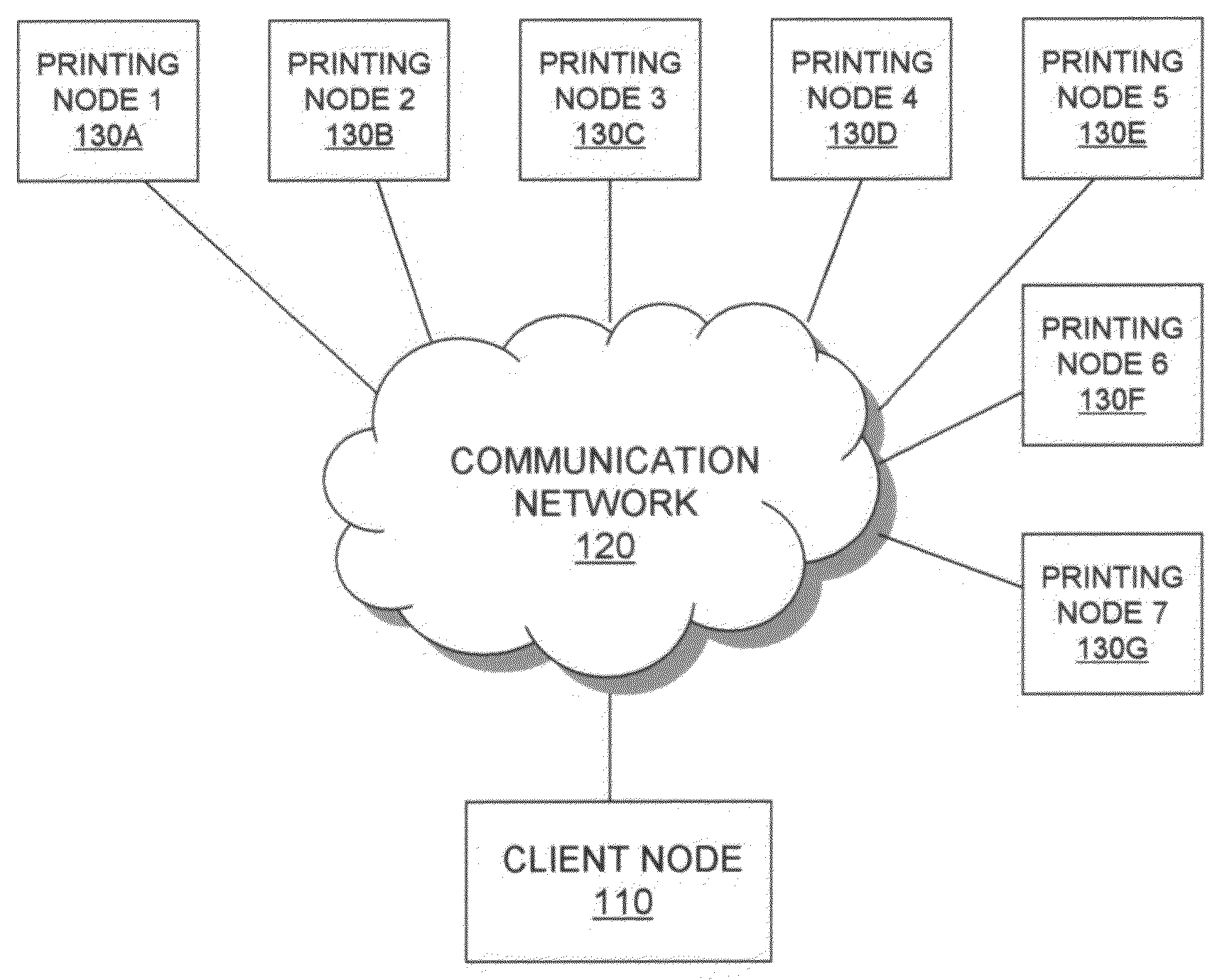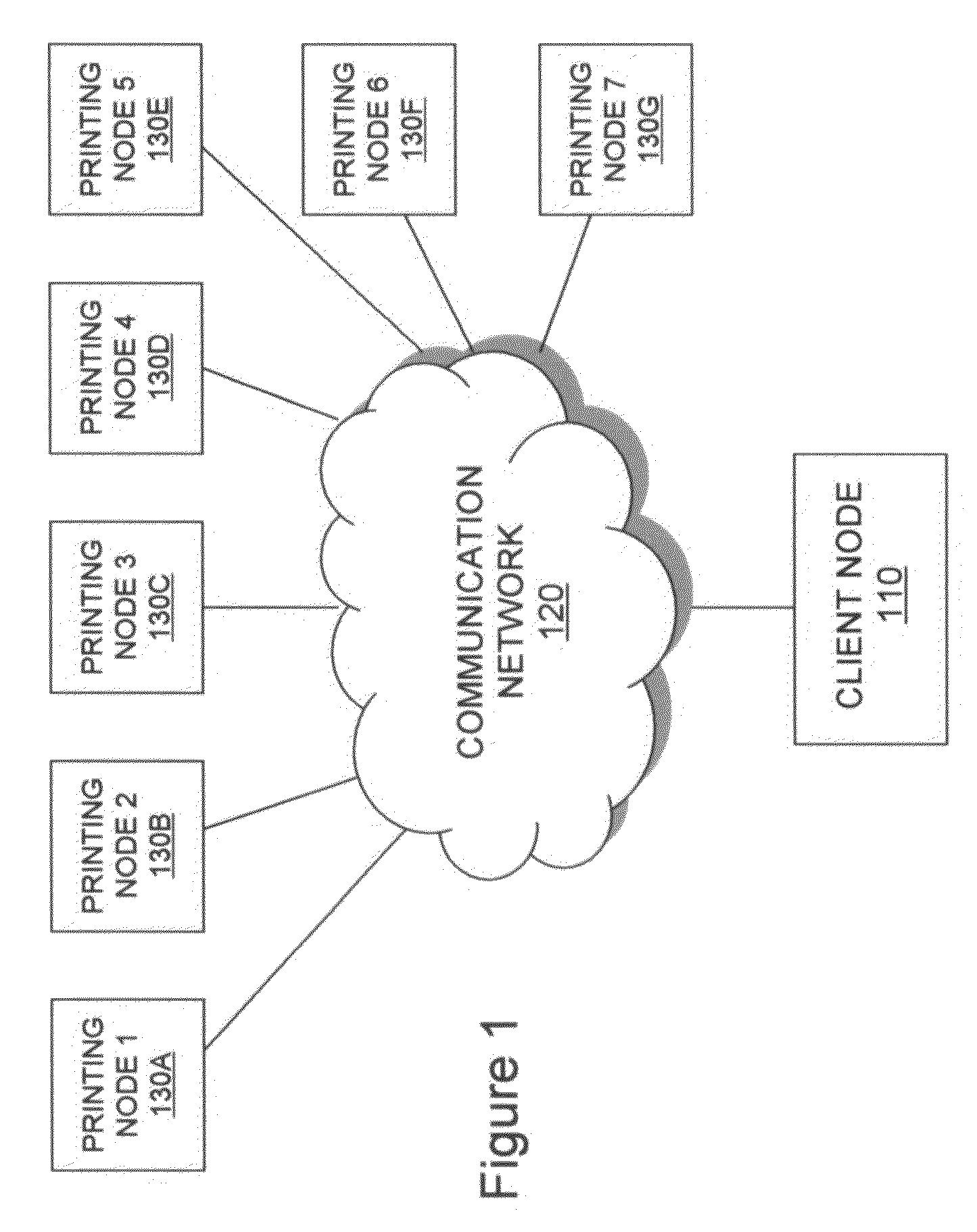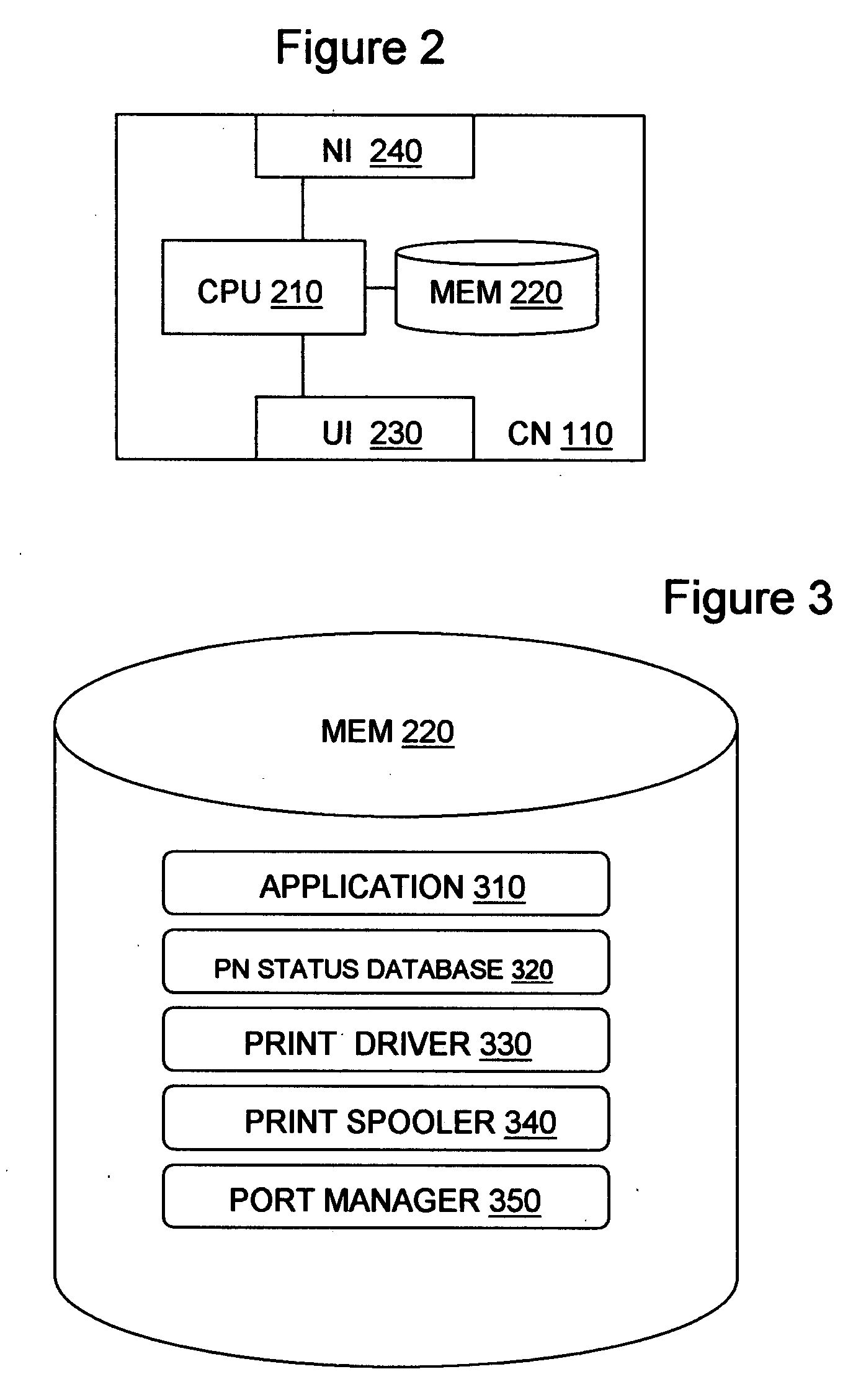Adaptive printer pools
a printer pool and printer technology, applied in the direction of digital output to print units, instruments, computing, etc., can solve the problems of inability to adapt to delay the completion of print jobs, and inability to meet the needs of users, etc., to achieve the effect of quick and accurate determination
- Summary
- Abstract
- Description
- Claims
- Application Information
AI Technical Summary
Benefits of technology
Problems solved by technology
Method used
Image
Examples
Embodiment Construction
[0019]In FIG. 1, a networked printing system is shown in one embodiment of the invention. The networked printing system includes a client node 110 and multiple printing nodes 130 communicatively coupled via a communication network 120. While seven printing nodes are shown for illustrative purposes, the number may vary. The client node 110 is a network capable processing device having a user interface, such as a personal computer, workstation, personal data assistant or other hand-held processing device, for example. The printing nodes 130 are network capable printing devices such as single function printers that support only printing facilities or multifunction printers that support printing facilities as well as other reproduction facilities such as copying, scanning and faxing, for example. Communication network 120 is a digital communication network such as a wired or wireless LAN or WAN. Client node 110 and printing nodes 130 communicate using one or more LAN or WAN protocols su...
PUM
 Login to View More
Login to View More Abstract
Description
Claims
Application Information
 Login to View More
Login to View More - R&D
- Intellectual Property
- Life Sciences
- Materials
- Tech Scout
- Unparalleled Data Quality
- Higher Quality Content
- 60% Fewer Hallucinations
Browse by: Latest US Patents, China's latest patents, Technical Efficacy Thesaurus, Application Domain, Technology Topic, Popular Technical Reports.
© 2025 PatSnap. All rights reserved.Legal|Privacy policy|Modern Slavery Act Transparency Statement|Sitemap|About US| Contact US: help@patsnap.com



